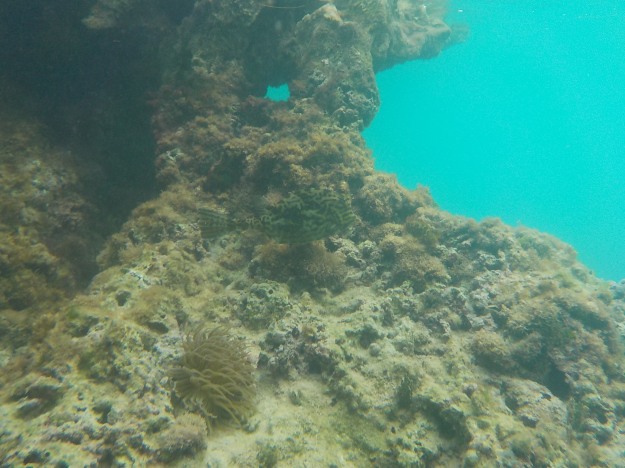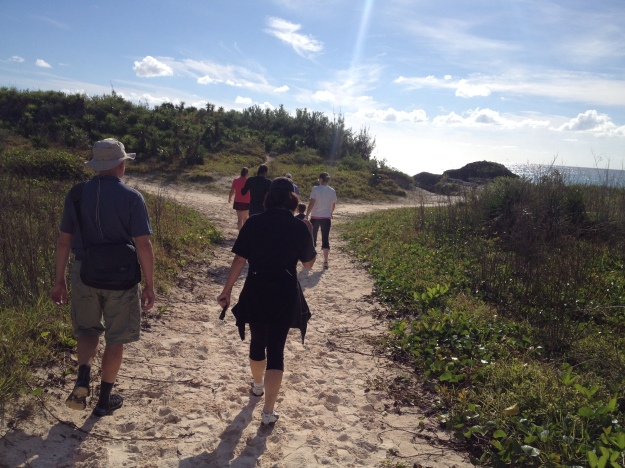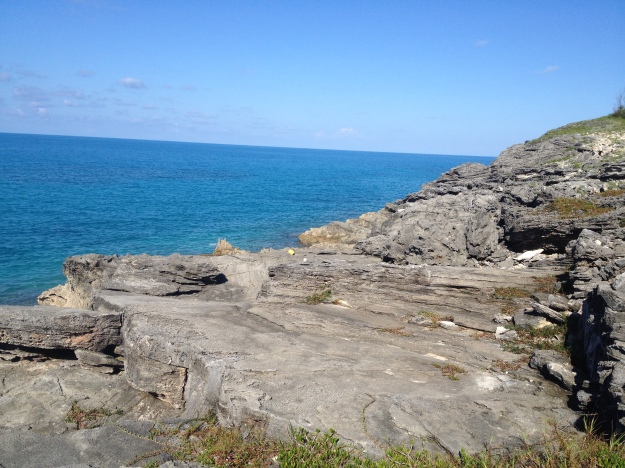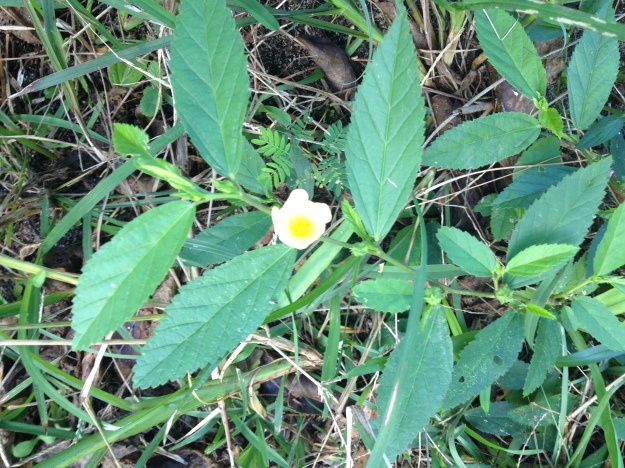Snorkel Bermuda

Sergeant Major
This is my opinion, based on just two years of snorkelling on the island. Before I came out here I had never snorkelled and the first time I tried I was a panicky-pink-puffing flounder barely able to keep my head down for thirty seconds. I am glad I persevered, however and now, if I were in a position to write a CV, snorkelling would make the “Interests and Activities” section!
Which Kit
As with any hobby I undertake, I enjoy buying the kit – yes, some hobbies never progress beyond this stage. I began with a combination mask-snorkel-flipper pack acquired for what then seemed an extortionate price from a local DIY-type store. I still have that set but more as an emergency or visitor option.
I have learned a few things:
- Snorkels come in so many varieties, but I prefer a “dry” type with a valve or ball of some sort at the top end to prevent water getting down the tube. I do have one with just a splash guard, but the main reason it is still in use is for the comfort of the mouthpiece, not the keep-water-out facet.
- The purge valve at the bottom is usually the first feature to stop working – this is where I wished I had rinsed the snorkels after use EVERY time.
- Mouth pieces come in different shapes and sizes and it is only after half an hour or so you know if you like it – one I have has a large effective shield that sits in front of the teeth but my jaw aches after using it, I think because the grips that go between the upper and lower teeth are just too big.
- My current favourite snorkel/mask is the Easy breathe, but even this is not perfect (see below).

Practice with Easybreathe mask
- The mask needs to fit well under the nose, if too long for your philtrum (the part between nose and lip) then the mask allows water in when you wiggle your nose. Think you won’t wiggle your nose? Well I did warn you.
- See-through for me is better than black, but this is personal (black ones remind me of the anaesthetics I had as a child to remove teeth), black ones are said to reduce the glare of the water and they often are made of softer silicone.
- Flippers mean you can cover longer distances but need practice, and my husband keeps telling me I am not using them correctly!
The Easybreath: We bought two of these just last week, a cross between the Hannibal Lecter and Darth Vader, I anticipate ridicule when I venture beyond the confines of Harrington Sound. I would award them 4/5 stars – brilliant for wide angle of view, ability to breathe normally through nose, no fogging, no water on face, but less good for going down in the water, and build quality (one of ours has a sticky float ball and the other seems to have lost its float ball altogether, probably when I put it together). On balance I am continuing to use this as my preferred snorkel, even without the float ball the top acts as a splash guard, but I may not use it when out in the waves.

Easybreathe in action
Dry snorkels: This is one of the better websites when it comes to explaining the differences between their models. They are also a tad more expensive. The top ultra dry model is my second favourite snorkel, based on function, not just because it came in pink, honest!
Choosing a snorkel depends on whether you want to keep to the surface or dive down, how much luggage space you have, and budget. When I started to learn the clarinet in school I was given a cheap instrument of dubious quality and because it was so hard to get a decent sound I never ever enjoyed myself – sometimes beginners need the better kit or they never progress any further.
Which Place
My first snorkel experience was at Tobacco Bay. This is on the Eastern end, St George’s island, and presents a sheltered gently sloping sandy cove surrounded by photogenic rocks. It is pretty much perfect for snorkelling and we have taken our visitors here for snorkel training sessions.
Even here however, on a windy day the sea can be choppy and the sea floor drops away quite dramatically once outside the shelter of the closest rocks.
http://tobaccobay.bm

Tobacco Bay
Perhaps my favourite coastal snorkel site is Whalebone Bay, further to the western end of St George’s island. You can pretty much guarantee privacy here as it seems even the locals don’t come here that often. Partially protected by a large rocky formation that sits in the mouth of the bay, there are superb examples of sea fans here. You might be put off by initial appearances – the beach is small with slippery rocks as the shallow water extends for some 30 feet, but walk carefully over this part and the rewards are quickly apparent, a variety of fish without too much swell from the sea. But there are no facilities, toilets having blown down in the hurricane – we used the old fashioned “change under a towel” method.
http://bm.geoview.info/whalebone_bay,3572963

Whalebone Bay
Shelly Bay is listed on tourist sites as suitable for children and swimming as it is shallow for a long way out. The snorkelling her is best along the sides of the bay and just around the corner at the right hand end. Facilities are going to be redeveloped so it might become more popular for novice snorkellers . http://bm.geoview.info/shelly_bay,3573039

Shelly Bay
Church Bay is along the south shore and every guide book describes it as “the” place to go for snorkelling. So we did … and rather quickly came back again. Yes there is good snorkelling here, but also waves and personally I was swept about too much to be able to fix on any fish, even if I had been confident that I wouldn’t become the next Bermuda shipwreck all by myself. The advantages of the south shore are the proximity of the reef and sandy beaches. I was too inexperienced to get to an enjoyment stage here, so maybe this is one I will report back on after another year of snorkelling. http://www.bermuda4u.com/sights/church-bay/
The East end snorkel beach is right at dockyard. I cannot review it as I have only played mini-golf here, not snorkelled. It does however get good reviews on Trip Advisor and if you are coming off a cruise ship or staying in the western end it is probably worth a look. http://www.snorkelparkbeach.com/about-us/beach-and-snorkeling.html
Which Fish
Now you are kitted up and in the right place, what can you expect to see?
Fish – doh!

Fish
A comprehensive list can be found at http://www.conservation.bm/fish/
But here is a personal tally:
The sergeant major : – these are my favourite fish and are”friendly” in that they will come close and appear inquisitive but I have been “nipped” on a few occasions when they seem unable to distinguish me from food (a mighty large meal). The bite doesn’t hurt, it is more of a surprise.
Bermuda bream are the most common silvery fish around with distinctive black dots just in front of the tail.

Bream
Blue stripe grunts from 3 to 30 inches; the grunt can actually be heard when they grind their pharyngeal teeth together and the sound is amplified by the swim bladder.
French grunts, more yellow stripes with some at an angle rather than just horizontal, found frequently alongside the blue-striped grunts
Squirrel Fish
Honeycomb cowfish

Cow fish
Barracuda
Bermuda chub
Four eye butterfly fish
Some fish I have seen in the aquarium but am not sure if I have actually seen them in the wild and these include the “Doctor fish”
The Latin name Acanthurus chirurgus, means thorny tailed surgeon!
If you snorkel late in the day you might see grey snapper fish. Young ones may have a pigmented stripe diagonally across the eye and i was told on the glass bottom boat cruise that this meant they were “in season” or fertile, but a google search suggests that it merely indicates a juvenile fish.
Parrot fish are for me the most exciting to see, perhaps because they are so large and come into shallow waters. In Harrington Sound we have seen both blue parrot fish and rainbow parrot fish, mostly small ones, for the larger ones you need to go to the outer coastline, Tobacco Bay and Whalebone Bay.
Each time I go out I see something different – last week we came across two large Spotted Sea Hares
And yesterday we found what we think was a File fish – warning: post-snorkel fish identification can be a source of spousal disagreement – anyhow, we didn’t have the camera with us so that is one that got away.

Blue stripe grunt
And Non-fish
Beware the Fire Sponge: It really really hurst when you touch this. But it does warn you – it is bright red after all.

Fire sponge, bottom left
Fire Coral also hurts lots and is more deviously coloured in an innocent yellow, but not one to get up close with!
Giant anemone
Shallow water starlet coral,
Ubiquitous are petticoat algae, turtle grass and the merman’s shaving brush.
Bermuda snorkelling is not the same as Caribbean or Pacific islands – the fish may be less brightly coloured and the coral more limited in species, but I would recommend it just for the relaxation element. Half an hour floating in warm water listening to bubbles and water while watching fish – in a spa they would charge the earth for this, and they probably aren’t real fish.

Conch


























